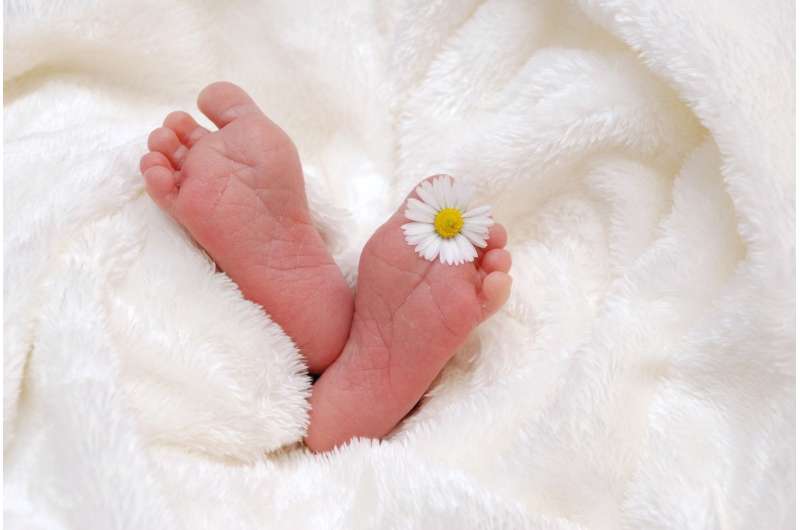Sharp drop in birth rate as a result of miscarriages in 1918 flu pandemic, study finds

The 1918 influenza pandemic in New Zealand resulted in thousands of fewer births, particularly in the 1919 year, largely because of miscarriages from influenza infection during pregnancy, researchers have found.
The study, involving researchers from the University of Otago, Wellington and the University of Auckland, is published in the New Zealand Medical Journal today.
The researchers estimate that in the year 1919 there were 3,756 fewer non-Māori and 239 fewer Māori births than in the pre-pandemic year of 1917.
Lead researcher Professor Nick Wilson says the declines represent a "birth rate shock," as they involve a sharp decline in birth rates per 1,000 population of 17 percent for non-Māori and 20 percent for Māori. The reductions in the birth rate in the pandemic year of 1918 (relative to 1917) were less, at nine percent for non-Māori and seven percent for Māori.
"We estimate that around 80 percent of the birth rate deficit in 1919 was from embryonic and fetal loss due to influenza infection in pregnancy.
"Some of these would have been miscarriages very early in pregnancy that the pregnant women would not notice—and others which they would have."
Another of the study authors, Professor Michael Baker said a smaller role would have been played by the deaths of adults during the pandemic, which could explain about 12 percent of the decline.
While this is the first such New Zealand study, the findings are broadly similar to those in other countries, Professor Baker says. "However, one county in Arizona in the United States had a much higher 43 percent reduction in the birth rate nine to 11 months after the peak of pandemic deaths."
An immunization specialist, general practitioner and co-author of the study, Dr. Nikki Turner, says the findings of the study can inform better planning around future influenza pandemics.
"In a pandemic we should prioritize protection of pregnant women from infection using all the proven means available. These include actions to avoid contact with sick people, prioritizing these women if pandemic vaccines are in short supply, and even prioritizing them for access to antivirals and ventilators in hospital intensive care units if they get sick."
Dr. Turner says these issues are also relevant to present-day flu seasons, as seasonal influenza in pregnant women also causes miscarriages.
"There is even an increased risk of death for the women themselves. Indeed, the World Health Organization gives a high priority to vaccinating pregnant women and New Zealand has provided free flu vaccinations for pregnant women since 2010.
"Unfortunately, we don't have good data on the current rate of influenza vaccination in pregnancy in this country, but it is thought to be low, at under half of pregnant women. So, as well as, current efforts to improve childhood immunization for protection against measles, we also need to improve vaccination in pregnancy against flu."
Background facts on the 1918 influenza pandemic
The pandemic killed an estimated 9,000 New Zealanders (in addition to all the fetal deaths described in this new study).
It is the largest natural disaster in New Zealand's history—and far greater than the largest non-natural disaster (the plane crash into Mt Erebus, which resulted in 257 deaths).
It imposed a particularly heavy burden on Māori and on the young adult population (with peak death rates among those aged in their late 20s).
In response to this pandemic New Zealand invested more in public health and adopted a new public health law in 1920.
More recently New Zealand has also invested in pandemic plans and stockpiles of some critical supplies.
In November 2019 Prime Minister Jacinda Ardern unveiled a national memorial to the pandemic.
The research paper, "One hundred years ago in 1919: New Zealand's birth reduction shock associated with an influenza pandemic' is published in the New Zealand Medical Journal.
More information: One hundred years ago in 1919: New Zealand's birth reduction shock associated with an influenza pandemic. N Z Med J. 2019 Dec 13;132(1507):57-62.


















